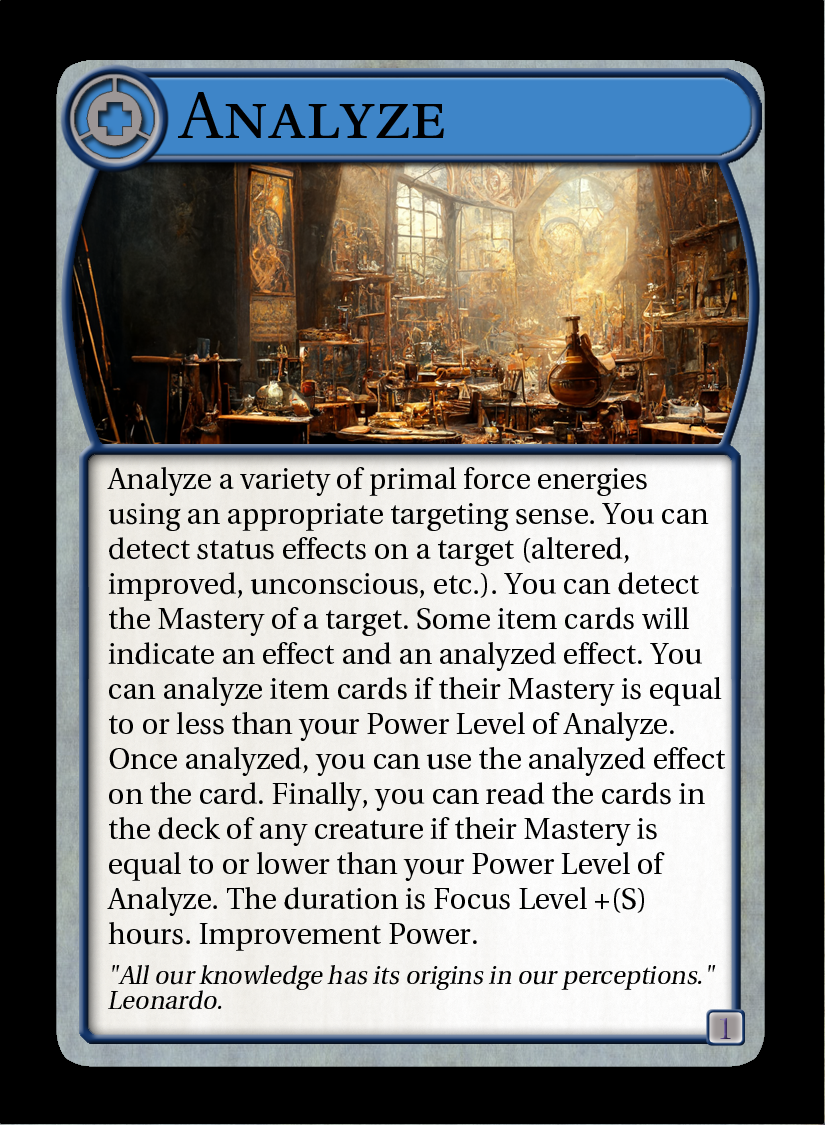BUILDING HANDS
This article is mostly about roleplaying and how we see it being used with our cards. Imagine someone saying, "I'm doing the same thing I did last round. You all remember, right?" That's fairly typical at most tables I imagine. This sort of dialogue that describes actions will be judged differently at every table, and most likely, by each player at the table.
So how can we make it more of a tie-in to roleplaying? In many games, the powers and skills include a description of what the power looks like, the type of energy used, and other details so all the players are on the same page when something like a fireball is used as an action. In Telken Lost, we don't provide those desriptions because the hand combinations are so numerous and even a 1 card change will create a different action. So it's your task to define your special fireball.
In Telken Lost, a fireball can be created with thousands of variations. Let's say a player enjoys using fire powers. They could build something that has 2 Modifiers (Range and Shred), the Attack power, and the Fire control. That's pretty basic but except for the fire, we don't know what it looks like, smells like, sounds like - or even if it generates any heat. This player names the action/hand, "Hunka Burnin Love" and each time it is used after the first time, the name becomes the description. A further part of the description includes how it is "sensed" by other players. In this case, it's a thin line of intense fire (perhaps like a laser) and sounds like a loud JJJJJJ and it splits into other lines of fire that impact the chosen enemies. The player could add futher distinction in hundreds of different ways to include smell, or other things that are seen, etc.
What follows are some examples of hands. It defines, in some ways, how our card system works.
Simple Melee Attack
Cards: Melee (power)
This is an example of the simplest way to build a Melee attack. As the card says, you may spend up to your Focus Level on this card. Remember, Focus Level is how many Character Points you spent on Melee. Let's say this player allocates 5 focus to this card for this hand. That yields 5 damage plus you may roll 5 dice to get more successes or (S) for a total of 5-10 possible damage.This player used 5 of their 7 focus, so they could add 1-2 modifiers to this hand.
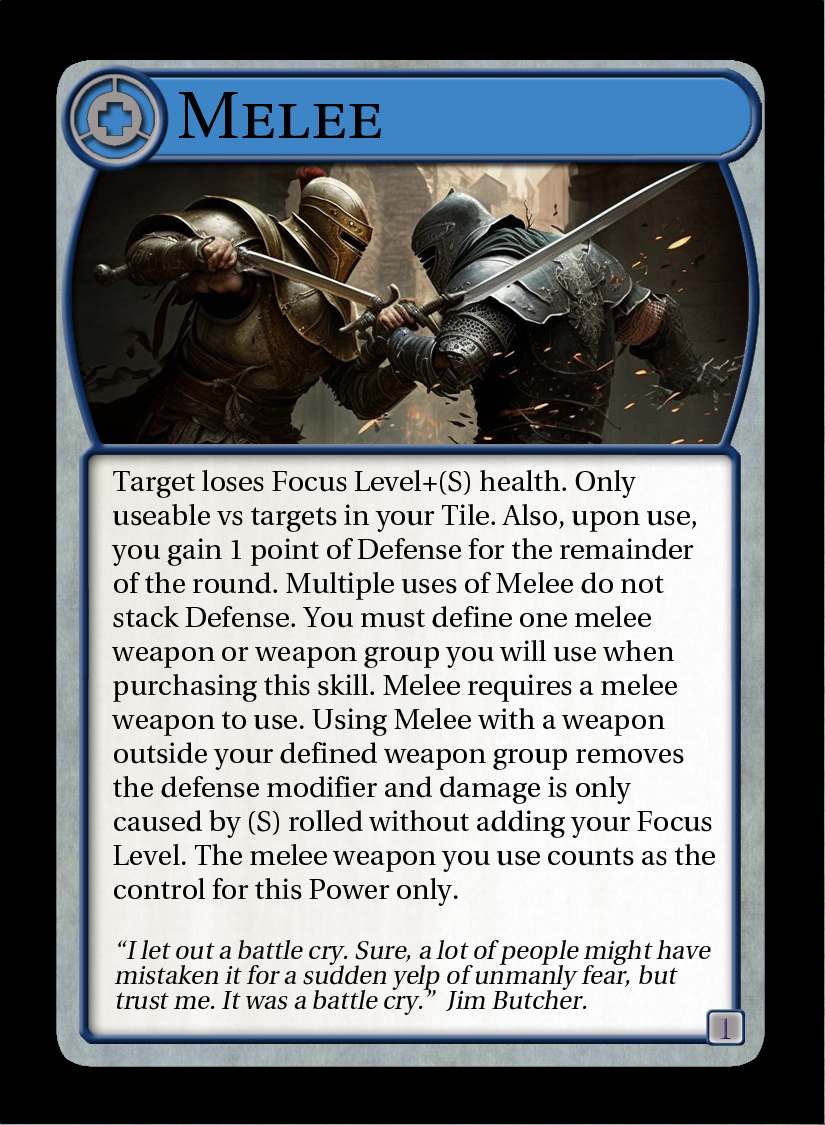
Rat Stomper
Cards: Melee (power), Area (modifier)
Let's say this player has spent 5 character points on Melee, and the most CP you can spend on Area is 1. The player allocates 5 focus to Melee and 1 focus to Area. That yields 5 damage plus you may roll 5 dice to get more successes or (S), for a total of 5-10 possible damage. Since the Area modifier has been used, all damage is applied to everything in the Tile of the person playing the hand as noted on the card. I call this hand "Rat Stomper" and describe it as a bunch of disembodied stone feet slamming the ground making quite a racket (visual and auditory). Though the Area card says you may add a tile to the area for 3 focus, that isn't possible when combined with the Melee card (as designated on the card).


Everybody Gets Some
Cards: Heal (power), Nuclear (control), Approval (modifier), Area (modifier)
The player has spent 4 CP on Heal, and 1 CP on each of Nuclear, Approval, and Area. This Hand is intended to give some healing to everyone in 1 Tile through the use of the Area modifier. The Nuclear control enhancer allows you to reroll all of your dice if you get zero (S). The Approval modifier adds 4 dice to your roll, but if you roll zero (S) the hand automatically fails. The player spends 4 focus on Heal and 1 focus on each of the other 3 cards. That yields 4 (S) from the Heal and the player may also roll 8 more dice to get (S) - 4 because of the Heal power and 4 because of the Approval modifier. The total yield will be anywhere between 4 and 12 health chips for each thing that can be healed in that tile (friend or foe). Please note that using the Nuclear control along with the Approval modifier is not a bad idea because if you do happen to roll 0 (S) you get a reroll.

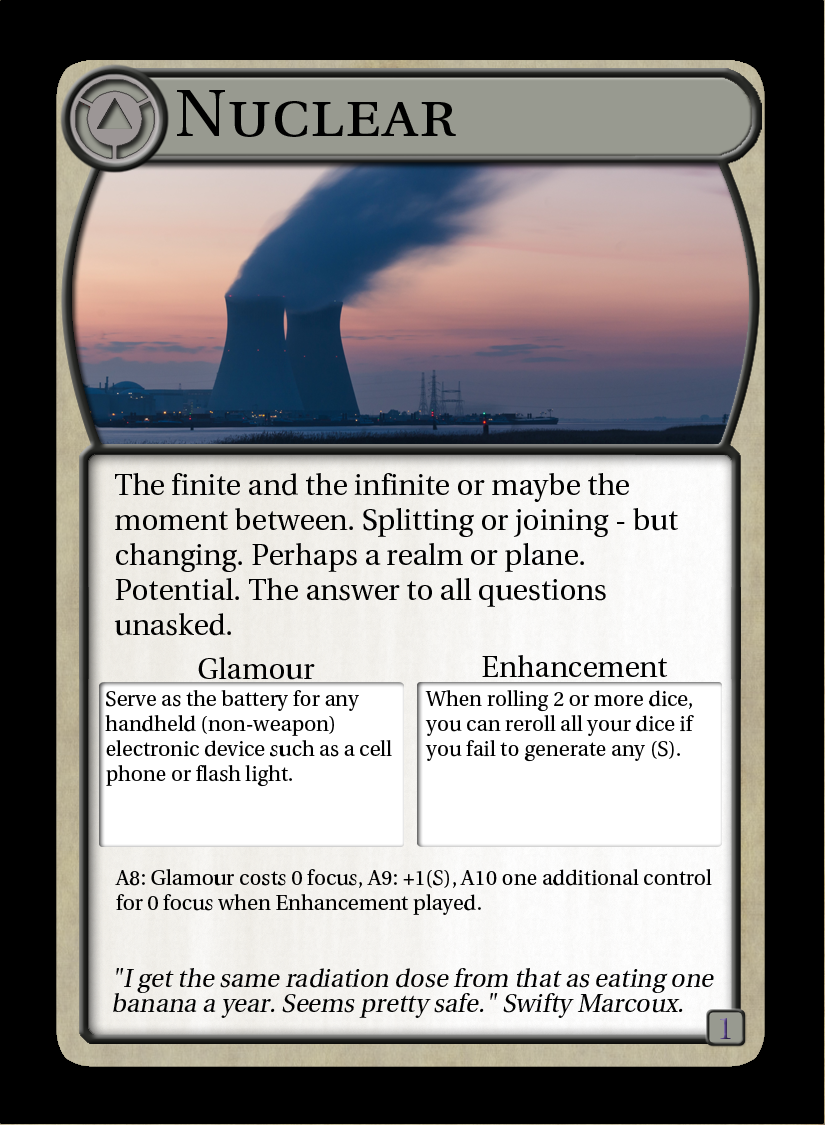
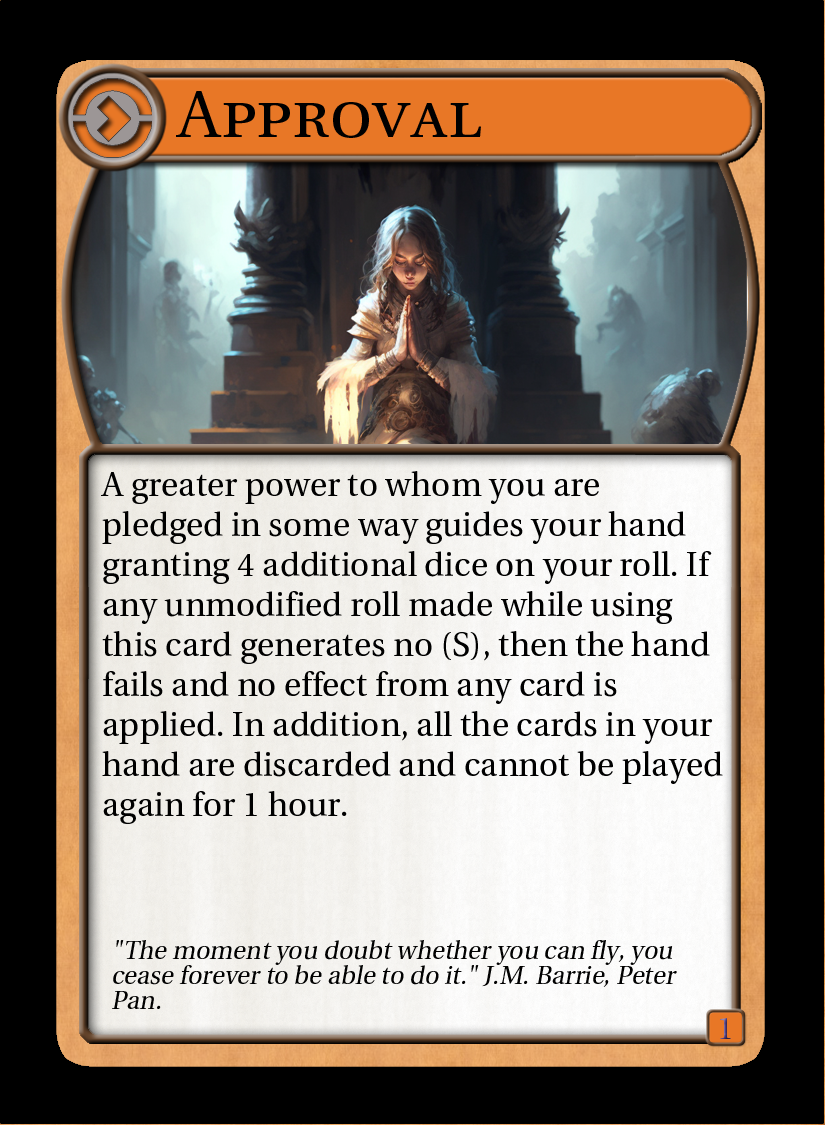

No See-ums
Cards: Speed (power), Invisible (power), Dark (control), Earth (control)
The player has Invisible and Speed at Focus Level 2. The intent of this hand is to give some extra MP and to become invisible to sight and sound for a few hours. Why not just use it every hour? Because the player doesn't want the effects of using a power to be detected while remaining stealthy. It is being used during the restricted hours of Dark (become invisible at 2 hours before midnight in this case) giving 2 extra dice, and the party will be walking in an underground tunnel complex so their feet are touching the earth giving 2 more dice to roll. So the player will roll for duration only. The number of (S) will each equal an hour of duration. The number of dice to roll is 2 for Invisible, 2 for Speed, 2 for Dark and 2 for Earth. The effects will work even without any (S) rolled for 2 hours based on how the 2 powers work. The total cost is 6 Focus.
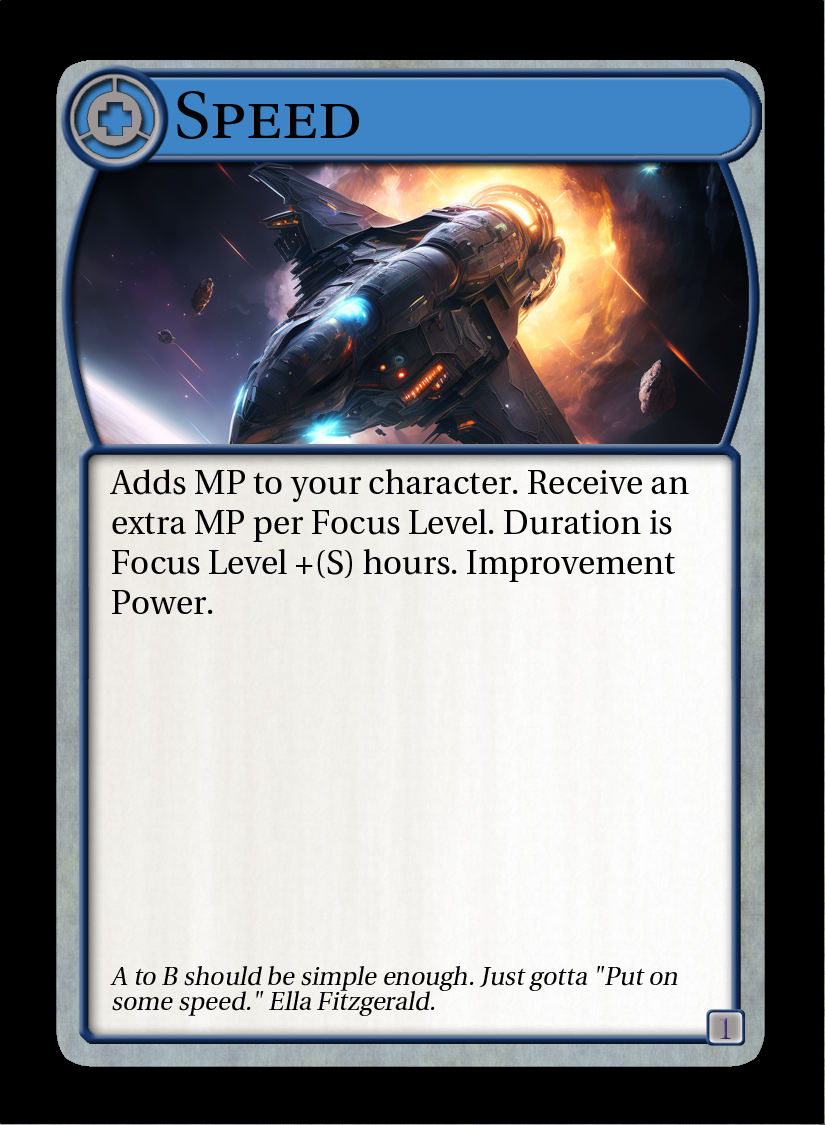
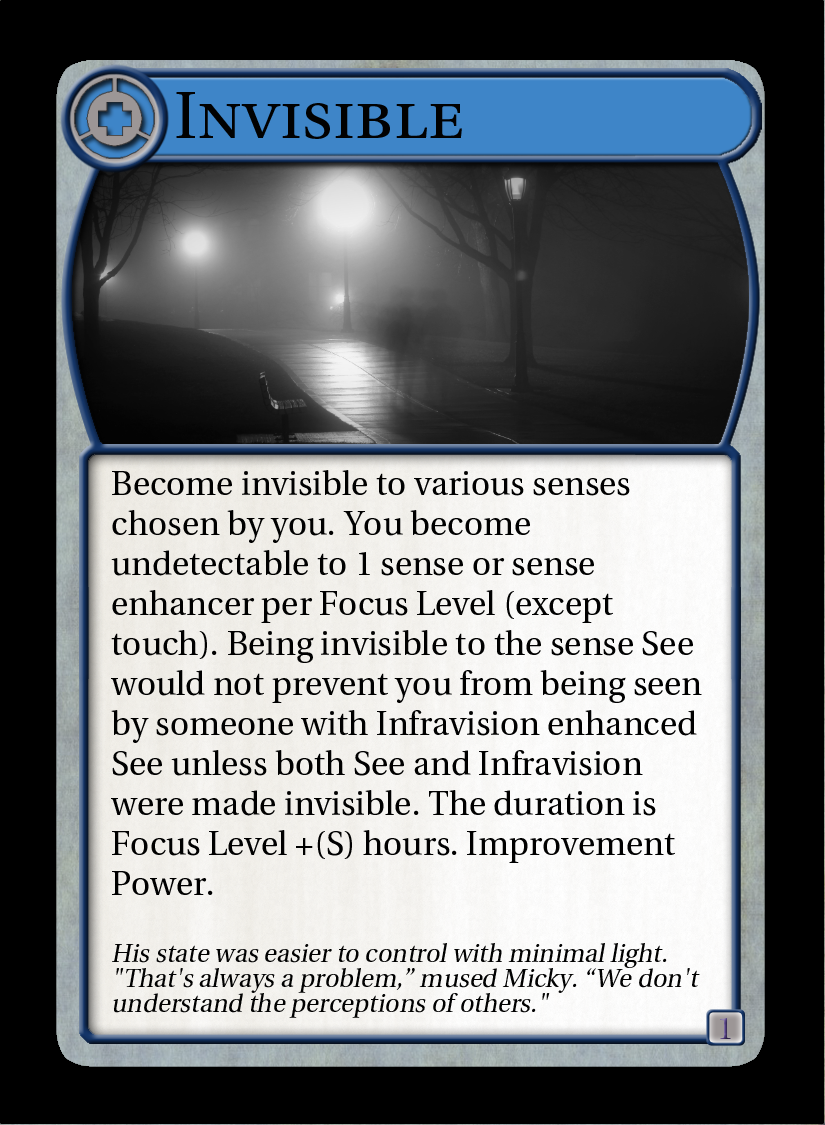


Preventative Maintenance
Cards: Protect (power), Magnetic (control), Trigger (modifier)
This hand uses a trigger (13 words or less), "When I quickly tap my teeth with my tongue 3 times". Then the hand will go into effect and yield protection from damage at a critical moment. Different controls would work here, but I like the potential of Magnetic for this one. The effect, when triggered is anyone within ten yards will experience a instant of vertigo. It won't change anyone's actions as it isn't allowed to, but like all effects, it does take place and the pc's and npc's should act accordingly.
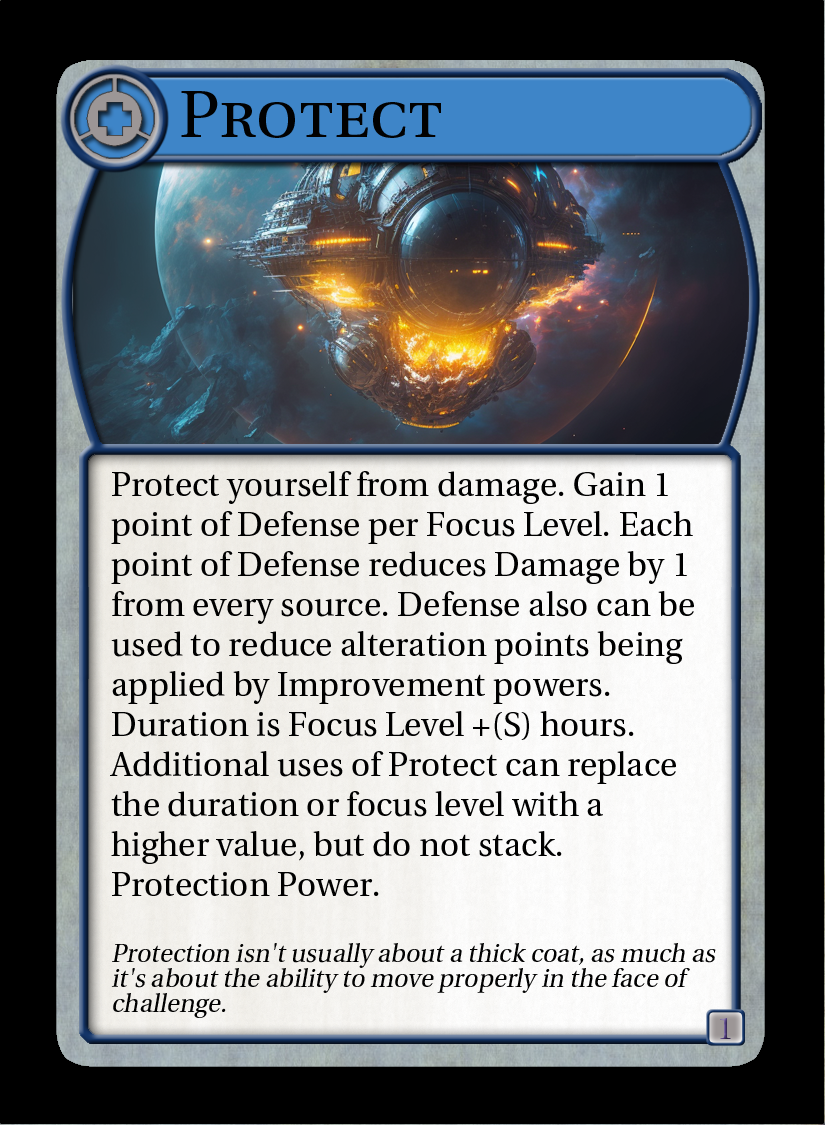

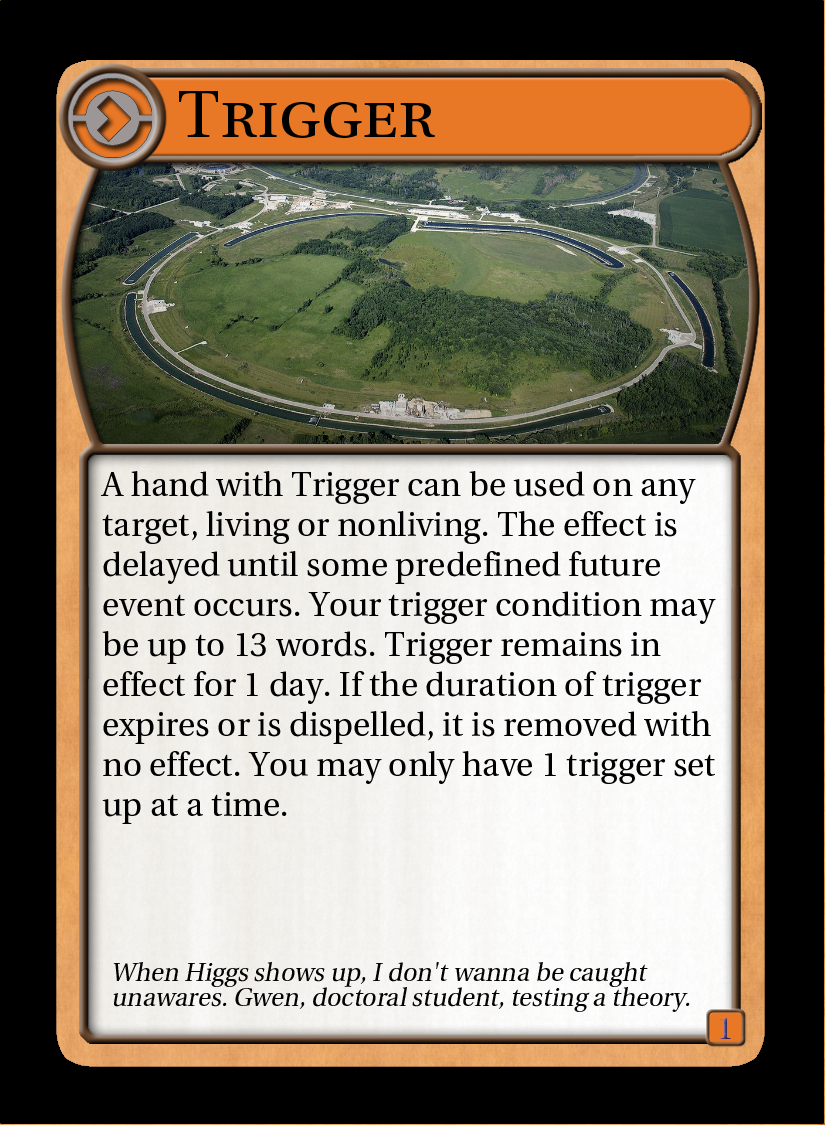
Line-a-lize
Cards: Analyze(power), Balance(control)
The power Analyze has a variety of effects and uses and since it lasts for hours, I like to keep this going whenever possible as even at the lowest Power level (which is 1) it is quite effective. The Balance control always yields 3(S). I call this "Always give me something" and it appears as a floating bar of energy with the object being analyzed on one end of the bar and hazy imagery of the constituent Controls on the the other end.
